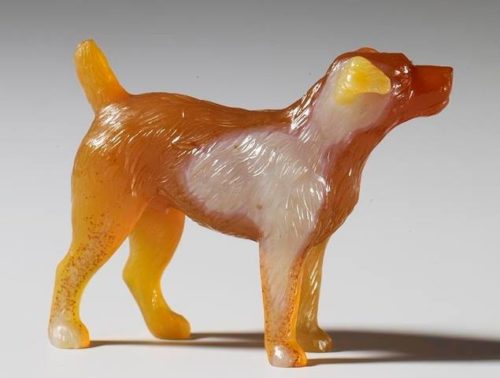
When a breed is “tough as nails,” one need only go back in time to learn the circumstances that lead to its development as such – or – just watch the movie, “Braveheart” which nicely illustrated the seemingly incessant wars between the Scots and the English. The land on which they fought is now Northumberland, but it was known at the time as Border Country. Repeated battles on the land, and attacks from armies that bulldozed through farms left the people who lived there struggling to eke out crops, if not starving altogether. Survivors had to be unsentimental and rugged, and so did their dogs who ate only what they, themselves, could catch. These were the ancestors of the Border Terrier.
In time, the gentry kept Border Terriers as part of their fox hunting activities, an activity largely the purview of the well heeled who wore their high hats and scarlet coats as the costume for sport. Border Terriers had long enough legs to chase after horses, but small enough bodies to fit into fox dens and bolt the fox.
Plain folks however, simply needed a dog that was low maintenance, and could protect their flocks and rid the farm of vermin. The Border Terrier, then, was a dog for all classes, and to this day, it retains the drive and stamina of a working terrier. Need proof? The Border Terrier is one of the more common breeds found in the Ryders Alley Trencher Fed Society (R.A.T.S.), sometimes known as the rat hunters of New York City.
Image: A Border Terrier made by Fabergé of brown agate and rose diamonds for eyes was commissioned by King Edward VII in 1907. The breed was among many kept in the Royal Kennels at Sandringham, but this one is part of the Royal Collection Trust.
